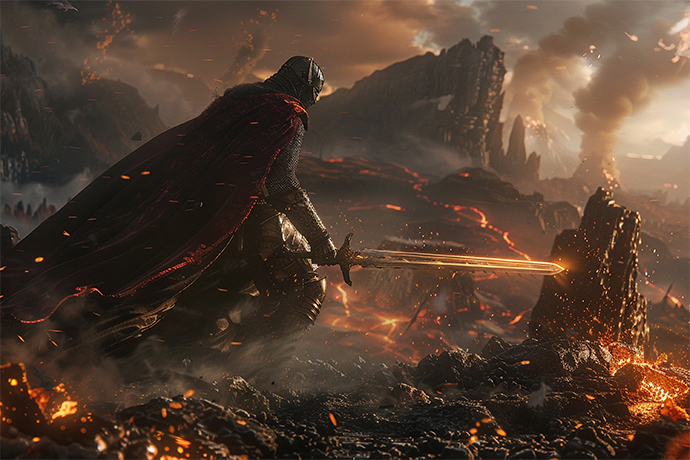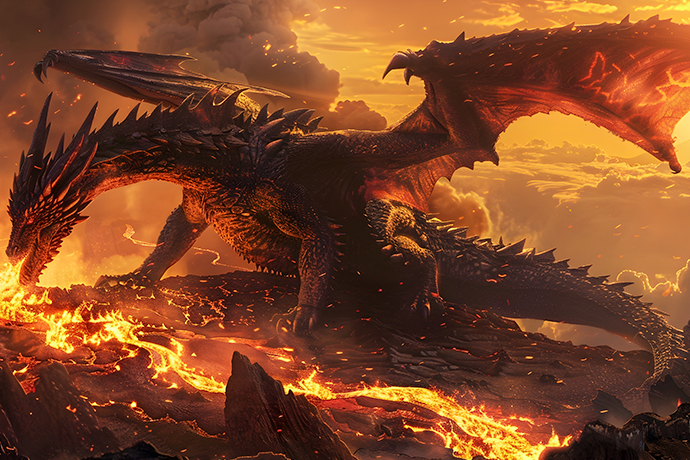
- September 23, 2024
- MAAC
- 0 Comments
- VFX
Transform Your Skills with VFX and Animation Course
Introduction
Visual effects (VFX) animation has revolutionized the way we experience media, transforming ordinary scenes into extraordinary visual narratives. Whether it’s the seamless integration of CGI in blockbuster movies or the dynamic graphics in video games, VFX animation plays a pivotal role in modern entertainment. If you’re looking to enhance your skills and dive into this exciting field, a VFX and 3D animation course in Pune is your gateway to mastering the art of creating captivating visual effects.

Understanding VFX Animation
- Definition and Importance of VFX Animation: VFX animation refers to the process of creating or manipulating imagery outside the context of a live-action shot in filmmaking. It involves the integration of live-action footage and generated imagery to create environments that look realistic but would be dangerous, costly, or simply impossible to capture on film. The importance of VFX in today’s media cannot be overstated; it allows filmmakers and game developers to push the boundaries of storytelling and immerse audiences in fantastical worlds.
- Historical Evolution of VFX in Media: The journey of VFX began with simple optical illusions and matte paintings in early cinema. Over the decades, technological advancements have propelled VFX from rudimentary effects to the sophisticated CGI and motion capture we see today. Landmark films such as “Star Wars,” “Jurassic Park,” and “Avatar” set new benchmarks, showcasing the transformative power of VFX and influencing generations of filmmakers and animators.
- The Role of VFX in Modern Entertainment: In the contemporary entertainment landscape, VFX is ubiquitous. It is used not only in films and television but also in video games, virtual reality experiences, and even advertising. VFX enhances storytelling by enabling the creation of visually stunning and conceptually imaginative scenes that captivate audiences and enrich their viewing experiences.
Benefits of Learning VFX Animation
- Enhancing Creative Skills: A VFX and animation course hones your artistic skills, allowing you to visualize and create intricate scenes that blend seamlessly with live-action footage. It enhances your understanding of light, shadow, texture, and movement, all of which are crucial for producing realistic visual effects.
- Expanding Career Opportunities: The demand for skilled VFX artists is growing across various industries, including film, television, gaming, and advertising. Learning VFX animation through animation courses after 12th opens up a plethora of career opportunities, from working in top studios to freelancing on diverse projects worldwide.
- Staying Competitive in the Industry: As technology evolves, the VFX industry continuously seeks professionals who are adept at using the latest tools and techniques. A VFX and animation course keeps you updated with industry standards, ensuring you remain competitive and relevant in a rapidly changing field.

Choosing the Right VFX and animation course
- Factors to Consider in a VFX Course: When selecting a VFX and animation course, consider factors such as the curriculum, faculty expertise, industry connections, and available resources. A comprehensive course should cover both theoretical knowledge and practical skills.
- Comparing Online vs. In-Person Courses: Decide between online and in-person courses based on your learning preferences and schedule. Online courses offer flexibility and convenience, while in-person courses provide hands-on experience and direct interaction with instructors and peers.
- Evaluating Course Accreditation and Reputation: Ensure the course is accredited and has a good reputation within the industry. Look for reviews and testimonials from past students, and check if the course is recognized by industry professionals and organizations.
Key Components of a Comprehensive VFX and animation course
- Core Concepts and Theories: A solid VFX and animation course will teach you the foundational concepts of visual effects, including principles of animation, physics of motion, and the art of storytelling through visuals.
- Software and Tools Proficiency: Proficiency in industry-standard software such as Adobe After Effects, Autodesk Maya, and Blender is essential. The course should offer hands-on training in these tools to prepare you for real-world projects.
- Practical Project Work and Portfolios: Practical experience is crucial in VFX. The course should include project-based learning, allowing you to work on real-world scenarios and build a portfolio that showcases your skills to potential employers.
Popular VFX Animation Software
- Introduction to Adobe After Effects: Adobe After Effects is a versatile tool for creating motion graphics and visual effects. It is widely used in the industry for compositing, keying, tracking, and animating.
- Mastering Autodesk Maya: Autodesk Maya is a powerful 3D animation software that offers comprehensive tools for modeling, texturing, rigging, animation, and rendering. Mastery of Maya is essential for creating high-quality 3D visual effects.
- Exploring Blender for VFX: Blender is an open-source 3D creation suite that supports the entire 3D pipeline. It is gaining popularity in the industry for its flexibility and extensive feature set, making it a valuable tool for VFX artists.
- Other Essential Software and Plugins: Beyond the primary software, familiarity with additional tools and plugins, such as Houdini for simulations and Nuke for compositing, can enhance your efficiency and expand your creative possibilities.
Understanding the VFX Pipeline
- Pre-Production: Concept and Planning: Pre-production involves conceptualizing and planning the visual effects, including storyboarding, animatics, and previs (pre-visualization). This stage is critical for visualizing the final product and planning the workflow.
- Production: Creating Visual Effects: During production, the visual effects are created and integrated with live-action footage. This stage includes 3D modeling, texturing, animation, lighting, and rendering.
- Post-Production: Compositing and Editing: Post-production involves compositing the visual effects with live-action footage, color grading, and final editing. This stage ensures that all elements blend seamlessly to create a cohesive and visually stunning final product.
Specializations within VFX Animation
- 3D Modeling and Texturing: Specialists in 3D modeling and texturing create detailed and realistic models of characters, environments, and objects, adding textures that enhance their appearance and realism.
- Character Animation and Rigging: Character animators and riggers bring characters to life by creating and controlling their movements. This specialization requires a deep understanding of anatomy, motion, and emotion.
- Motion Graphics and Visual Effects: Motion graphics artists create dynamic visual content for various media, combining graphic design and animation techniques to produce engaging visuals.
- Simulation and Dynamics: Simulation artists focus on creating realistic physical phenomena, such as explosions, water, smoke, and fire, using advanced simulation software and techniques.
Skills Development in VFX Animation
- Enhancing Technical Skills: A successful VFX artist must possess strong technical skills, including proficiency in software tools, understanding of visual effects principles, and ability to troubleshoot technical issues.
- Improving Artistic Abilities: Artistic skills are equally important in VFX. Developing a keen eye for detail, composition, and aesthetics will enhance the quality and impact of your visual effects work.
- Developing Problem-Solving Techniques: VFX projects often present unique challenges. Developing strong problem-solving skills will enable you to find creative solutions and overcome obstacles efficiently.

Practical Training and Hands-On Experience
- Importance of Real-World Projects: Engaging in real-world projects provides valuable hands-on experience and helps you understand the practical applications of your skills. It also prepares you for the challenges and demands of the industry.
- Building a Strong Portfolio: A well-rounded portfolio is crucial for showcasing your skills and attracting potential employers. Include a variety of projects that demonstrate your expertise in different areas of VFX.
- Internship and Apprenticeship Opportunities: Pursuing internships and apprenticeships allows you to gain industry experience, build professional connections, and learn from experienced mentors.
Career Paths in VFX Animation
- Film and Television Industry: The film and television industry offers numerous opportunities for VFX artists, from working on blockbuster movies to creating visual effects for TV shows and commercials.
- Gaming Industry: The gaming industry is a dynamic field for VFX artists, involving the creation of immersive visual effects for video games and virtual reality experiences.
- Advertising and Marketing: In advertising and marketing, VFX artists create captivating visual content for commercials, promotional videos, and digital campaigns.
- Freelancing and Independent Projects: Freelancing offers flexibility and the opportunity to work on a diverse range of projects. Independent projects allow you to explore your creativity and bring your unique visions to life.
Success Stories: VFX Animation Graduates
- Profiles of Successful Alumni: Highlighting the success stories of VFX animation graduates can inspire and motivate aspiring artists. These profiles showcase the diverse career paths and achievements of alumni.
- Their Career Journeys and Achievements: Sharing the career journeys and accomplishments of successful VFX artists provides valuable insights into the industry and the potential opportunities it offers.
- Tips and Advice from Industry Experts: Industry experts can offer practical advice and tips for succeeding in the VFX field, from building a strong portfolio to networking and staying updated with industry trends.
Networking and Industry Connections
- Importance of Networking in VFX: Networking is essential for building professional relationships, learning about job opportunities, and staying informed about industry developments.
- Joining Professional Organizations: Joining professional organizations, such as the Visual Effects Society (VES), provides access to resources, events, and a community of like-minded professionals.
- Attending Industry Events and Conferences: Attending industry events and conferences allows you to network with professionals, learn from experts, and stay updated with the latest trends and technologies.
Staying Updated with Industry Trends
- Following VFX News and Blogs; Keeping up with VFX news and blogs helps you stay informed about the latest developments, tools, and techniques in the industry.
- Participating in Online Communities: Engaging in online communities and forums allows you to connect with other VFX artists, share knowledge, and seek advice and feedback.
- Continuous Learning and Skill Upgradation: The VFX industry is constantly evolving, making continuous learning and skill upgradation essential for staying competitive and relevant.
Challenges in VFX Animation and How to Overcome Them
- Common Challenges Faced by Beginners; Beginners often face challenges such as mastering complex software, understanding technical concepts, and managing project deadlines.
- Strategies for Continuous Improvement: Adopting strategies such as setting goals, seeking feedback, and practicing regularly can help you continuously improve your skills and overcome challenges.
- Overcoming Creative Blocks: Creative blocks are common in artistic fields. Overcome them by experimenting with new techniques, taking breaks, and seeking inspiration from various sources.
Financial Aspects of Pursuing a VFX and animation course
- Understanding Course Costs and Fees: Understanding the costs and fees associated with a VFX and animation course is essential for planning your education and budgeting effectively.
- Exploring Scholarships and Financial Aid: Explore scholarships, grants, and financial aid options to help offset the costs of your education and make pursuing a VFX and animation course more affordable.
- Evaluating Return on Investment; Consider the potential return on investment (ROI) of a VFX and animation course by evaluating the career opportunities and earning potential it offers.
Balancing VFX and animation course with Personal Life
- Time Management Tips: Effective time management is crucial for balancing your course work with personal responsibilities. Prioritize tasks, set schedules, and avoid procrastination.
- Maintaining Work-Life Balance: Maintaining a healthy work-life balance is essential for your well-being. Make time for relaxation, hobbies, and spending time with family and friends.
- Staying Motivated and Focused: Stay motivated and focused by setting achievable goals, celebrating small successes, and reminding yourself of your long-term career aspirations.
Resources for VFX Animation Students
- Recommended Books and Tutorials: Enhance your learning with recommended books and tutorials that cover various aspects of VFX animation, from technical skills to creative techniques.
- Online Forums and Support Groups: Join online forums and support groups to connect with other students, share experiences, and seek advice and support.
- Accessing Free and Paid Learning Resources; Take advantage of free and paid learning resources, such as online courses, webinars, and workshops, to supplement your education and expand your knowledge.
Preparing for a Successful Career in VFX Animation
- Crafting an Impressive Resume: Craft an impressive resume that highlights your skills, experience, and accomplishments. Tailor it to the specific roles you are applying for.
- Preparing for Job Interviews: Prepare for job interviews by researching the company, practicing common interview questions, and showcasing your portfolio and projects effectively.
- Building an Online Presence and Portfolio; Build an online presence by creating a professional website and portfolio. Use social media and professional networks to showcase your work and connect with potential employers.
Conclusion
- Recap of the Importance of VFX Animation Skills: VFX animation skills are essential for creating captivating and immersive visual experiences in modern media. Mastering these skills opens up a world of opportunities.
- Encouragement to Enroll in a Course: Enrolling in a VFX and animation course at MAAC Satara Road Pune is a valuable investment in your future. It provides the knowledge, skills, and experience needed to succeed in this dynamic field. Now is the time to take the leap and transform your skills with a VFX and animation course. Equip yourself with the tools and expertise to excel in the captivating world of visual effects.


Leave a Comment